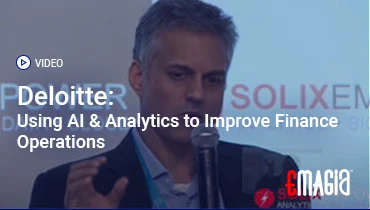In the world of finance and accounting, the month-end close is a recurring and often stressful ritual. It’s the period when teams race against the clock to reconcile accounts, verify transactions, and produce accurate financial statements. While the immediate goal is to hit the deadline, the real value of an efficient close goes far beyond simple compliance. A fast, accurate, and transparent close provides leadership with the timely insights needed to make critical business decisions. It’s the foundation for strategic planning, performance analysis, and investor confidence. This article will serve as your ultimate guide to implementing the Best Practices for Efficient Month-End Close, moving your team from a reactive, time-consuming process to a proactive, strategic one. We will explore everything from process optimization and technology adoption to team collaboration, helping you transform your monthly close from a burden into a competitive advantage.
The Foundational Pillars of an Optimized Close
Before diving into the specifics of technology, it’s crucial to establish the foundational principles of an efficient month-end close. This starts with a clear, well-documented process and a strong understanding of the tasks involved. We will discuss the importance of a detailed checklist, a clear timeline, and assigned responsibilities. The goal is to eliminate ambiguity and ensure that every team member knows their role and the deadlines they need to meet. By focusing on these core principles, you create a solid framework that technology can then be used to enhance. This section will also cover the value of communication and collaboration, highlighting how a coordinated team effort can significantly reduce delays and errors.
Process and People: A Synergistic Approach
An efficient month-end close isn’t just about the software you use; it’s about the people and the processes that drive it. This section will explore the symbiotic relationship between process and people. We will detail how to identify bottlenecks, streamline workflows, and empower your team with the right tools and training. The focus is on creating a culture of accountability and continuous improvement, where everyone is invested in the success of the close. We will discuss the benefits of cross-training, the importance of regular performance reviews, and how to create a positive, supportive environment that minimizes stress during a high-pressure period. This human-centric approach is one of the most effective Best Practices for Efficient Month-End Close.
Leveraging Technology for a Smarter Close
In today’s digital age, technology is the most powerful tool for transforming the month-end close. Automation, AI, and integrated systems have changed the game, allowing finance teams to perform tasks with unprecedented speed and accuracy. This section will delve into the specific technologies that are revolutionizing the close process. We will cover the role of automated reconciliation, the benefits of using a single, unified platform for all financial data, and how intelligent automation can handle repetitive, rule-based tasks. The right technology can free up your team from mundane data entry and verification, allowing them to focus on more strategic, high-value activities like analysis and reporting. This is where you can truly move beyond the transactional and become a strategic partner to the business.
Risk Mitigation and Internal Controls
Speed and efficiency should never come at the expense of accuracy and security. A key part of the Best Practices for Efficient Month-End Close involves a focus on internal controls and risk mitigation. This section will detail how to build a robust control framework that ensures the integrity of your financial data. We will discuss the importance of segregation of duties, automated audit trails, and the use of technology to flag anomalies and potential errors. By embedding these controls directly into your close process, you can provide greater assurance to stakeholders and auditors, reducing the risk of costly mistakes and regulatory issues. A well-controlled close is a fast close.
The Emagia Advantage: Transforming Your Month-End Close
Emagia’s intelligent automation platform is specifically designed to address the challenges and complexities of the month-end close, making it one of the top Best Practices for Efficient Month-End Close. Our AI-driven system streamlines the entire order-to-cash cycle, which is a critical part of the closing process. We provide real-time visibility into all receivables data, ensuring that you have a single source of truth for all transactions. Emagia’s platform automates cash application and reconciliation, dramatically reducing the time and effort required to match payments to invoices. Our intelligent dispute resolution tools ensure that any discrepancies are resolved quickly and efficiently, preventing them from holding up the close. By automating these key AR functions, we enable finance teams to cut days off their monthly close cycle, improve data accuracy, and focus on strategic analysis rather than manual data reconciliation. With Emagia, you gain a powerful partner in your quest for a faster, more accurate, and more transparent financial close.
Frequently Asked Questions About Month-End Close Best Practices
What is a month-end close?
A month-end close is the process of finalizing and reconciling all financial transactions for a given month. It culminates in the preparation of a company’s financial statements, including the balance sheet, income statement, and statement of cash flows.
How can I reduce the time it takes to close the month?
To reduce the time, you should standardize and automate processes, use a detailed checklist, assign clear responsibilities, and leverage technology for tasks like bank and account reconciliation. Pre-close activities can also help.
What is the role of technology in an efficient close?
Technology plays a crucial role by automating repetitive tasks, providing real-time data visibility, and integrating different financial systems. This reduces manual effort, minimizes errors, and allows finance teams to focus on more strategic analysis.
What is the most common challenge in the month-end close?
One of the most common challenges is manual data entry and reconciliation, which is prone to errors and can cause significant delays. Lack of real-time data and poor communication between teams also pose major obstacles.
Why is an accurate month-end close so important?
An accurate close is vital because the resulting financial statements are used for critical business decisions, performance evaluation, investor relations, and regulatory compliance. Inaccurate data can lead to poor decision-making and loss of credibility.
How can a finance team prepare for the month-end close?
Preparation is key. A finance team can prepare by reconciling major accounts throughout the month (daily or weekly), ensuring all transactions are properly recorded, and communicating with other departments to get necessary information and approvals ahead of time.
How does automation help with month-end close?
Automation helps by performing tasks like cash application, journal entry posting, and reconciliation automatically. It ensures consistency, reduces the risk of human error, and speeds up the entire process, allowing the team to focus on resolving exceptions and analyzing results.



